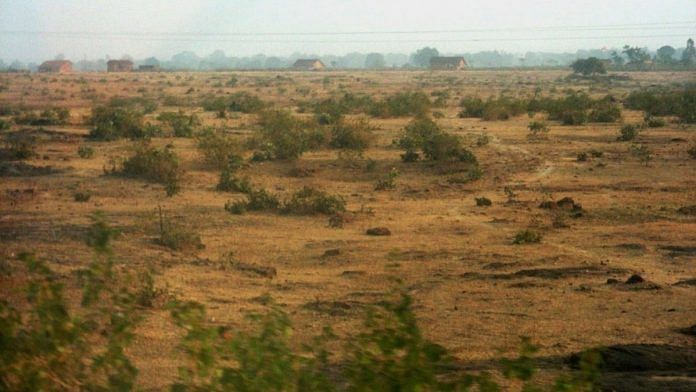New Delhi: Madhya Pradesh, West Bengal and Odisha are the best performing Indian states in land record digitisation, according to an annual land records index prepared by Delhi-based think-tank National Council of Applied Economic Research (NCAER).
The NCAER’s Land Records and Services Index (NLRSI) 2020-21 released Thursday said nearly all states and union territories — 29 out of 32 — showed a gradual improvement in their efforts to digitise land records compared to the previous year.
The data was primarily collected on two aspects — the extent of digitisation of land records and the quality of these records.
Madhya Pradesh retained the top spot for the second year in a row, according to the NLRSI data. West Bengal, Odisha, Maharashtra and Tamil Nadu followed to round up the top five.
While MP and Tamil Nadu maintained their respective positions, West Bengal moved up four ranks — from sixth to second position. Odisha and Maharashtra, which were placed second and third in NLRSI 2019-20, respectively, dropped one rank each.
Out of the 32 states and UTs ranked, only Assam and Lakshadweep Islands saw a decline in points from last year.
Bihar saw the most significant jump in percentage terms, at 125 per cent, helping the state to climb from 23 to 8 in the latest rankings.
Also read: All homes in Telangana villages now have tap water, but it’s not a Nal Se Jal story alone
Digitisation efforts
The land digitisation efforts in India received a new boost at both the Centre and state levels after the launch of a survey of villages and mapping with improved technology in village areas under the SVAMITVA scheme last year.
The scheme seeks to confer land titles in so far unmapped and inhabited parts of rural India and to distribute property cards in villages.
The digitisation of land records proves to be a major obstruction to accessibility and transparency in ownership records across the country. This in turn slows down investment and poverty reduction efforts both by the government and private sector in rural as well as urban areas.
Digitisation will also save costs incurred on stamp papers and payment of stamp duty and registration fees. It will also reduce the scope of fraudulent property deals and related litigation.
As these records will be tamper-proof, it will permit e-linkages to credit facilities and certificates based on land data along with information on eligibility for government programmes.
“Digitising these land records is critical for ensuring India’s economic growth, as accessible, high-quality records not only help increase the visibility and availability of land for large-scale investment opportunities but at an individual level, also makes it possible for the public to transact land and use it for seeking credit in a dispute-free environment,” said a statement issued by NCAER.
Litigation issue
According to the think-tank, land-related disputes in India account for 60-70 per cent of all civil litigation. About 25 per cent of all cases decided by the Supreme Court involve land disputes, of which 30 per cent concern disputes relating to land acquisition.
A large number of land pockets are in legal disputes and unclear titles, making it insecure for the vulnerable, thus creating a sense of insecurity in the business, discouraging new investment, and posing a challenge to governance.
The pendency of several million cases relating to land disputes in courts is partly because of the lack of comprehensive and up-to-date land records.
Other survey results
The NCAER survey shows that if only the parameter of ‘extent of digitisation’ is factored, Bihar saw the maximum improvement, followed by West Bengal, Tripura and Karnataka.
The scores for Assam showed a decline as the few digitised copies of record of rights in the state that were available in 2019-20 are not available online now.
In terms of the quality of land resources, Karnataka saw the most improvement over 2019-20, followed by Bihar, Tripura and Goa. However, eight states and UTs reported a fall on this parameter — Andaman and Nicobar Islands, Uttarakhand, Gujarat, West Bengal, Rajasthan, Lakshadweep, Tamil Nadu, and Jharkhand.
While NCAER conducted the survey, investment firm Omidyar Network India financed the research.
Also read: Govt to launch vehicle scrappage policy in phases, commercial vehicles likely to go first



